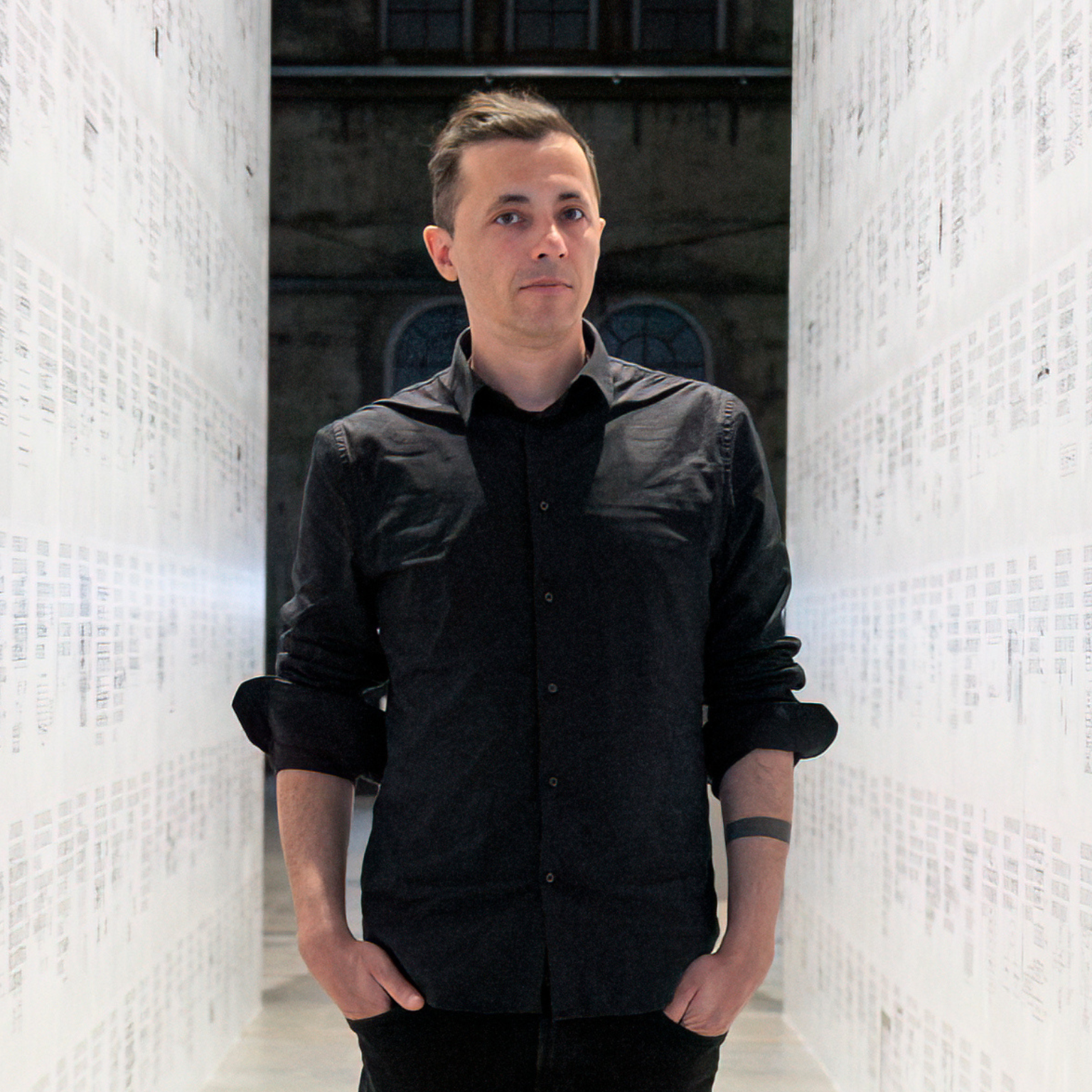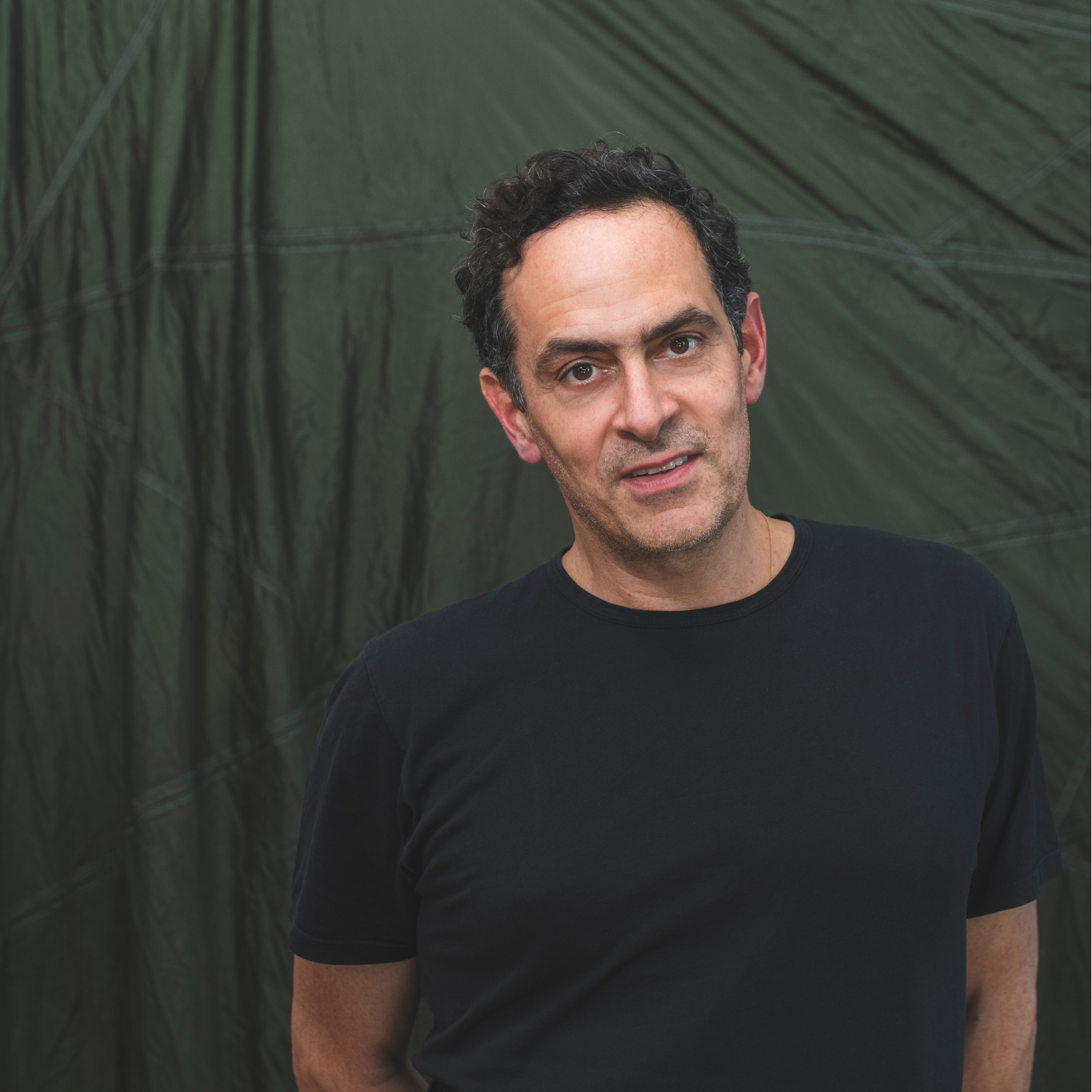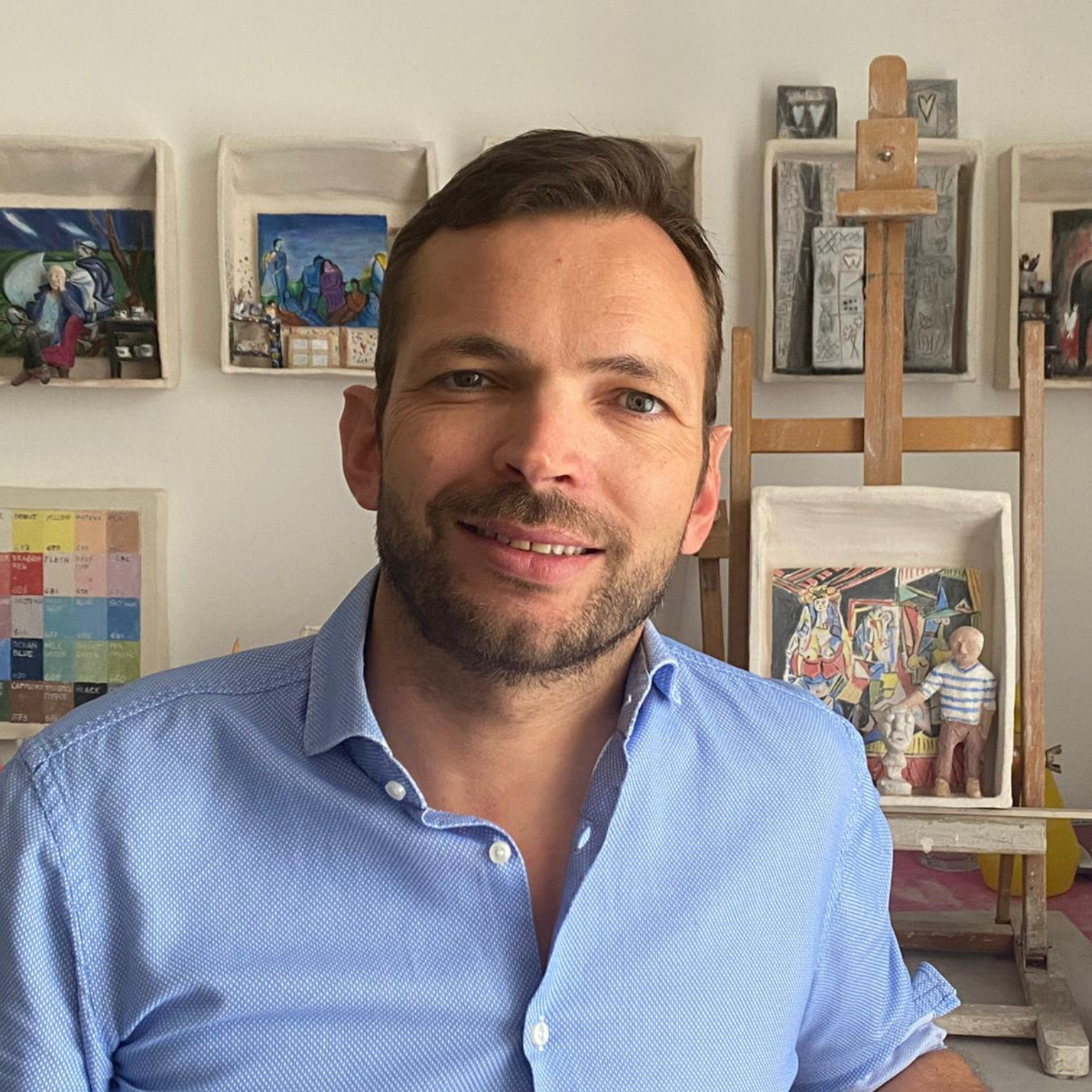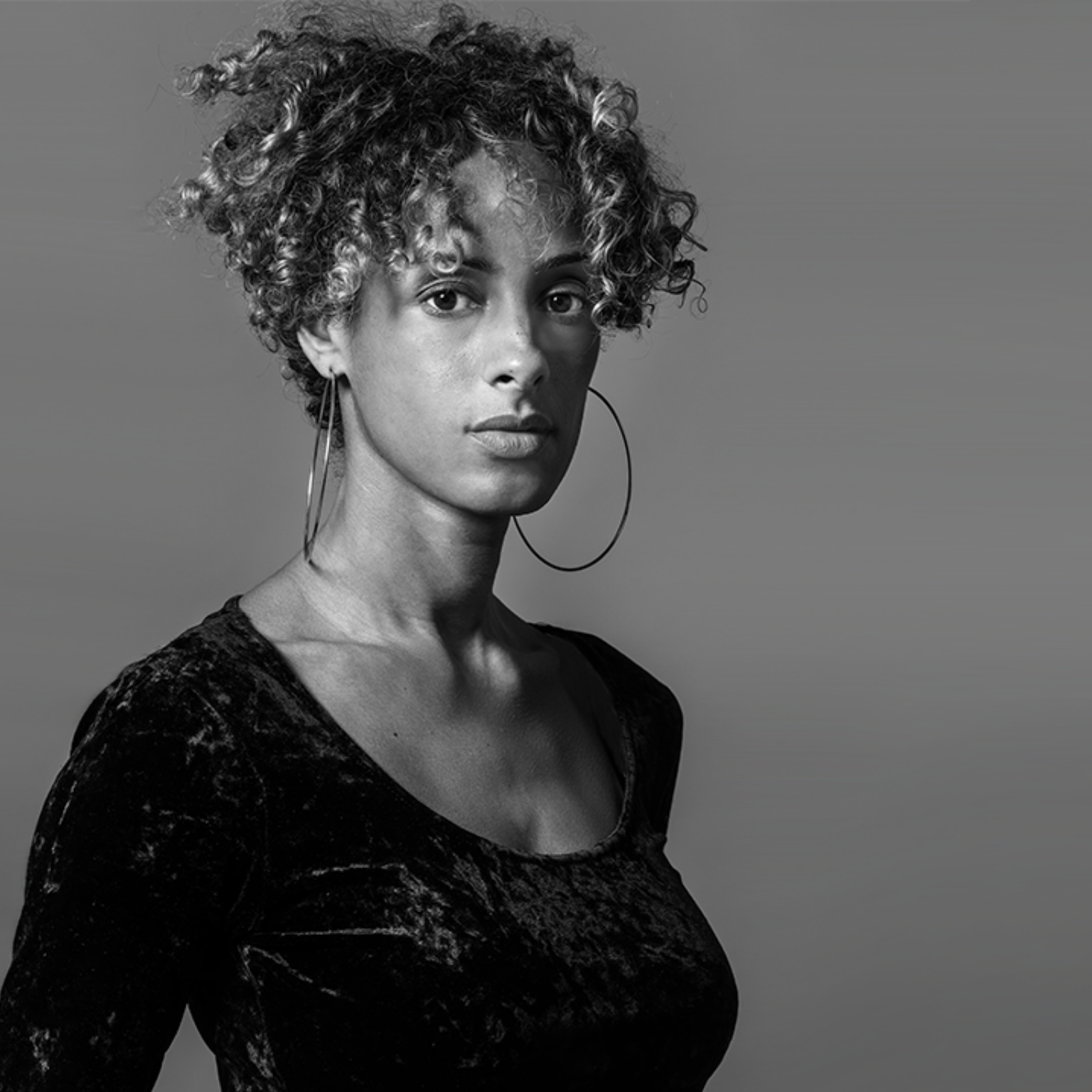Paolo Cirio, hacker artist from Italy. Photo © Courtesy of the artist
This interview aligns with the ‘Nature and Culture’ campaign initiated by the Culture For Causes Network in November 2022. Within this framework, an exhibition titled ‘Reconciliation with the Living’ was exhibited in Paris at UNESCO HQ, focusing on the theme of harmonizing humanity with itself and the natural world; the exhibition travelled to Florence and to Lisbon as well. Additionally, MuseumWeek 2023 featured numerous hashtags related to environmental topics. A video series titled ‘Nature and Art’, a collaborative effort between UNESCO and the Solomon R. Guggenheim Museum, was also showcased as part of this initiative.
His artistic approach investigates and denounces the power structures that define global society today and how the control and diffusion of information affects every sector through technology, starting from the life of each individual, up to politics and the economy.
Paolo Cirio (Turin, 1979) is an Italian conceptual artist, activist, and hacker and the central themes of his activity are linked to technology, privacy, and power dynamics in contemporary society. Cirio has created projects that mix art, activism, and technology to stimulate critical reflection on social and political issues.
In 2011’s Face to Facebook, the artist, together with his colleague Alessandro Ludovico, created a website that exploited Facebook security flaws to collect and display public profiles. This project has sparked widespread discussion about online privacy issues, social platform policies, and how personal information is handled on the Internet.
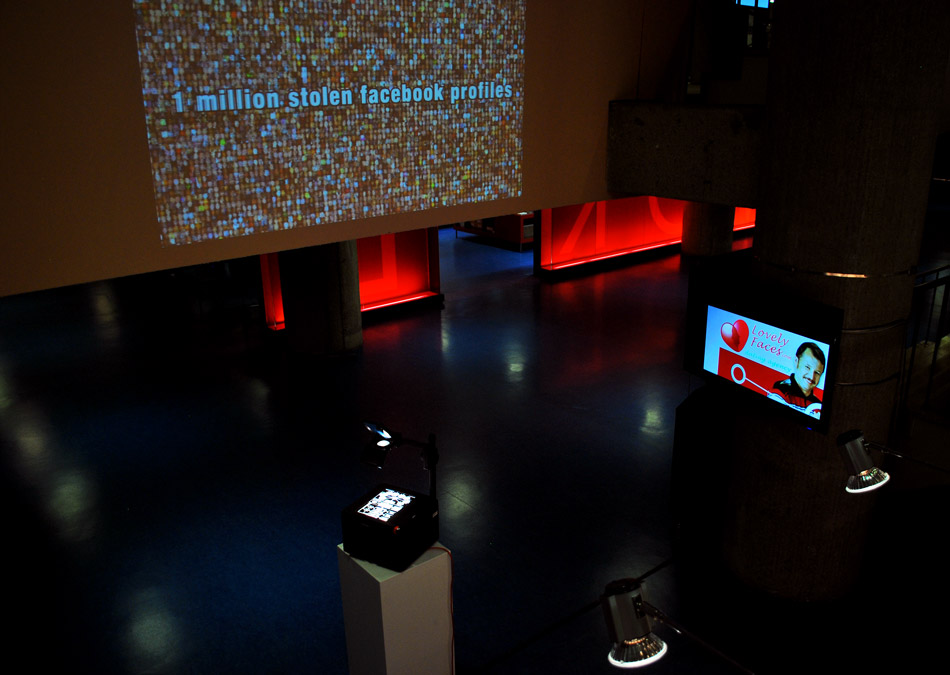
The Capture project consists of the creation of a database with the faces of four thousand French police officers: the artist collected on the web a thousand images taken in public places of the officers during the demonstrations in France.
Each image was then processed with facial recognition software to identify the officers, then posters with their faces were created and distributed on the streets of Paris. This project has opened a great debate on the potential uses and abuses of facial recognition and the use of artificial intelligence. Putting in the foreground those who should protect us.
The Italian artist’s production is aimed at anyone who wants to receive food for thought on what is happening around us, probably without fully realizing it. And precisely among global emergencies, climate change is one of the inspirational themes of some works, such as Climate Culpable and Climate Evidence.
Last but not least, the news that two environmental activists poured soup on the armored glass that protects the Mona Lisa at the Louvre Museum in Paris; the two women wore a t-shirt with the words “Riposte Alimentaire” (Food Response) to promote “the right to a healthy and sustainable diet”.
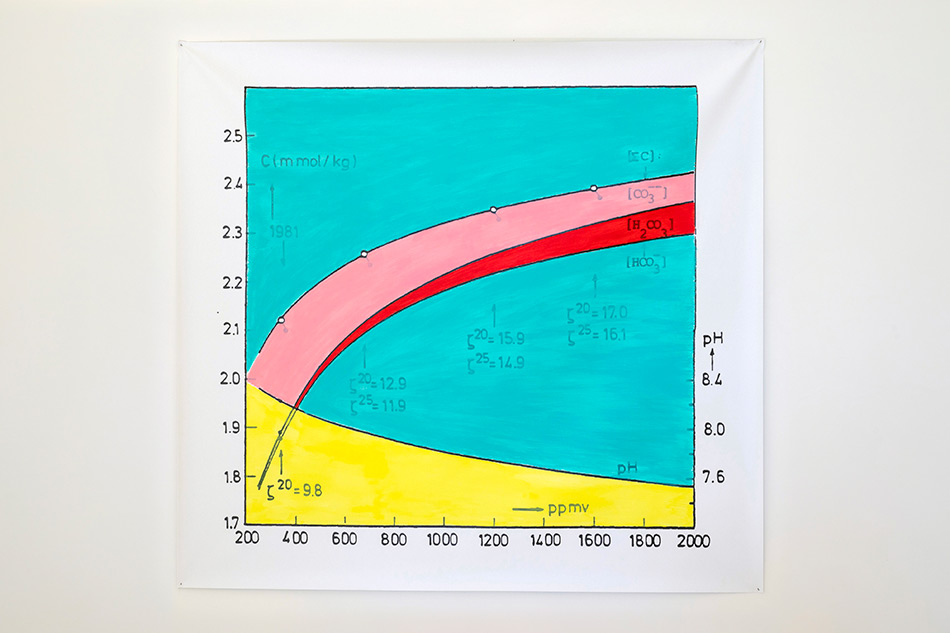
So why did you choose to go down this path on climate change?
“I began to be interested in climate change as early as 2010 (Drowning-NYC.net), dealing with how NYC will be impacted. At the time there was an initial buzz about it but the data and research were mainly projections of the future.
2019 was the first year in which the climate crisis became omnipresent globally and began its exponential journey. Precise data on the emissions of large fossil fuel companies were only published in 2017, which I incorporated into the work ‘Climate Culpable’, and only recently have the studies that these companies have kept secret for decades and which I use in the series of works ‘Climate Legal Evidence’. This new data-inspired my new interest in climate change, but also a gut feeling, an intuition that has pushed me to focus on this issue full-time for three years now”.
Did you also somehow feel a sense of responsibility, of denunciation, as an artist?
Yes, that’s right, also a responsibility concerning my work which often focuses on legal, economic, and juridical issues of complex and global systems. While several other artists and activists are working on this issue, I believe there was a lack of an approach that looked directly at the responsibilities of large oil, gas, and coal companies.
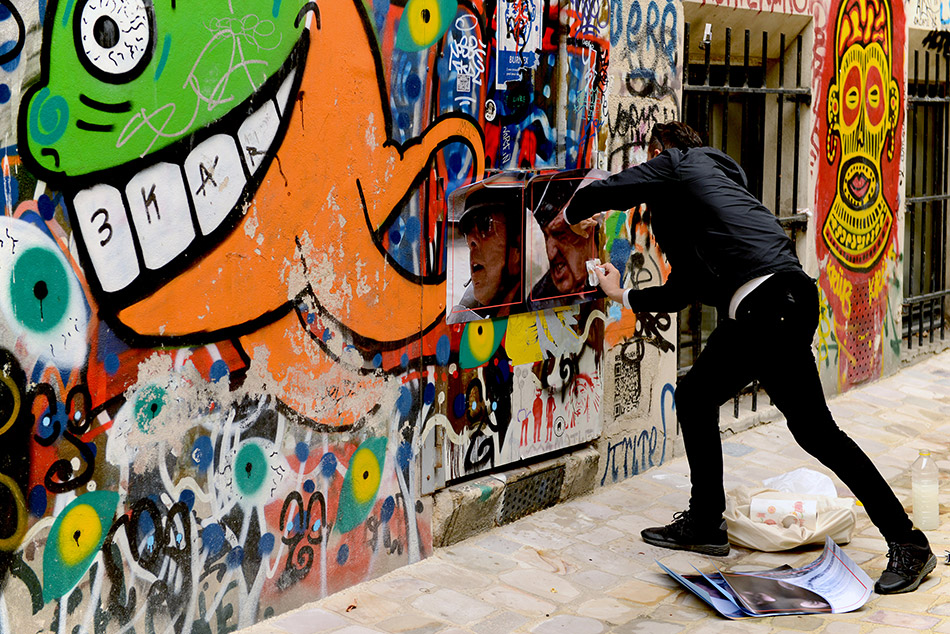
Unfortunately, these companies have not only polluted the atmosphere by generating the greenhouse effect, but they have polluted the culture and knowledge of this science, hiding and confusing everyone regarding the causes of climate change. In fact, in schools and universities, as in the media and museums, these companies have influenced a lot to slow down a true ecological transition, and not to be blamed.
Also for this reason, many of the exhibitions and works regarding these themes have unfortunately never seriously addressed the causes of climate change. It took social movements, such as Extinction Rebellion or Ultima Generazione, which rightly seek to vandalize art to raise awareness of the cultural falsity in which we still live.
Yet today we still see most museums have exhibitions on these issues which are nothing more than Greenwashing operations paid for by large banks such as San Paolo or even directly by ENI itself, which have a specific interest in confusing the causes and solutions to the climate crisis.
The expression “reconciliation with the living” means a constant change in balance between human beings and other forms of life. In the context of global crisis, for a better and lasting coexistence, how do you think everyone can do their part? Where to start?
We need to start by following real climate activists, from Greta Thunberg to the Ultima Generazione, and not as a media myth, but listening to what they say because they are the most informed about this science, while we need to be very skeptical of what we hear in the media, in museums, in official politics, and even in universities, because often even today, as in recent decades, they have and are lying and confusing a lot regarding these issues.
And about nature?
I believe that concerning reconciliation with nature, this can only happen with the knowledge and acceptance of science, and not with empty, false words and useless actions dictated by a system of power that has no intention of losing its influence and profit.
This also explains why Greta Thunberg was once a respected celebrity, but today she is often arrested and referred to as a hooligan, this is an indication of today’s reality, and unfortunately of the future, where nature dies together with democracies, and only authoritarian governments they can maintain the society that awaits us.
Referring to the Iris and Street Ghosts projects, however, you highlight the differences between individuals in various aspects, trying to give each one an identity (even an apparent one), and questioning cultures, privacy, copyright, and power… How much is this condition the possible solutions to emergencies such as immigration, for example?
Control technology becomes the tool that replaces the social fabric and natural environment that maintains a balance in our traditional societies. With climate change we should get used to increasingly living in a more artificial and automated reality, the one that by epochal coincidence is created by artificial intelligence.
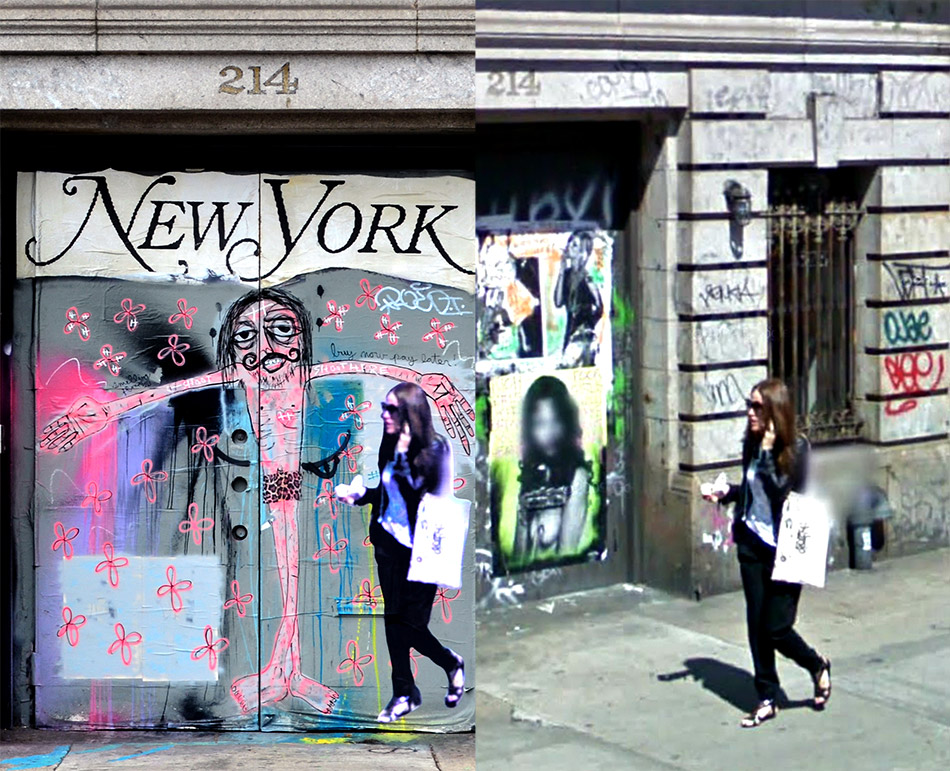
The technologies of control and surveillance will expand, not only with facial recognition, the iris, or just with Google and Meta but the complexity and ubiquity are destined to increase.
Our private lives will change, and we will be manipulated more and more easily, while social tensions will be repressed even before we are born. The example of immigration is right, if you think about the masses of climate refugees that are expected in the coming decades, artificial intelligence will certainly play a role in classifying migrants and discriminating against them.
On the other hand, this is already happening in China or India, where artificial intelligence and biometrics are already used to repress the masses, migrants, and minorities more and more effectively.
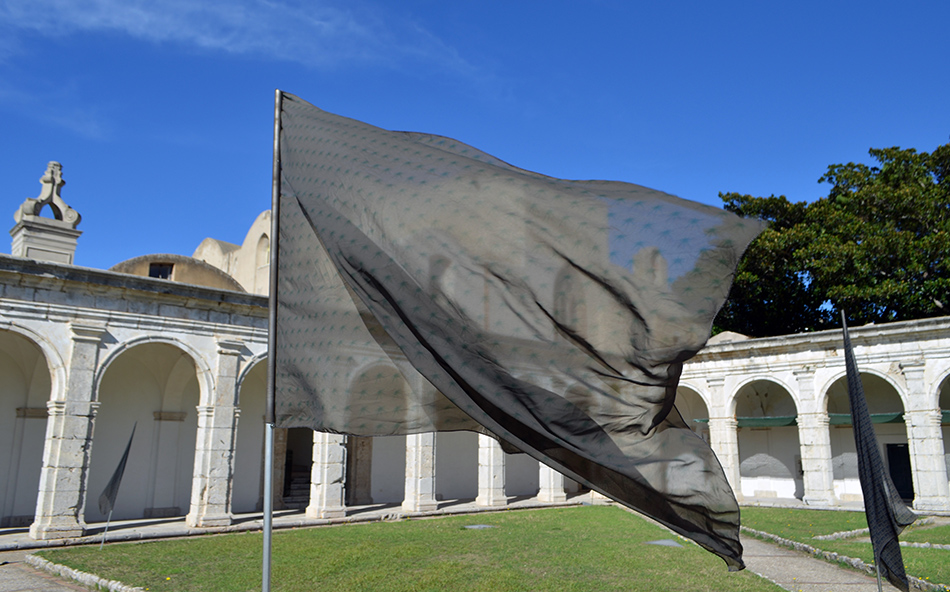
During your work due to environmental degradation or loss of biodiversity, have you ever found yourself in critical or uncomfortable situations?
I would say more and more often I feel uncomfortable, even if the death of nature, catastrophes, and human suffering scare me less and less. We must remember that we are experiencing the sixth mass extinction of our planet, there have been others and even if it takes tens of millions of years, life will start again, it will be at a high cost and we are not certain, the Earth is the last planet of the solar system to have a stable balance of greenhouse gases and temperatures.
What makes me most uncomfortable are today’s cultural and media systems that manage to create this type of ignorance and indifference concerning this very important moment on our planet.
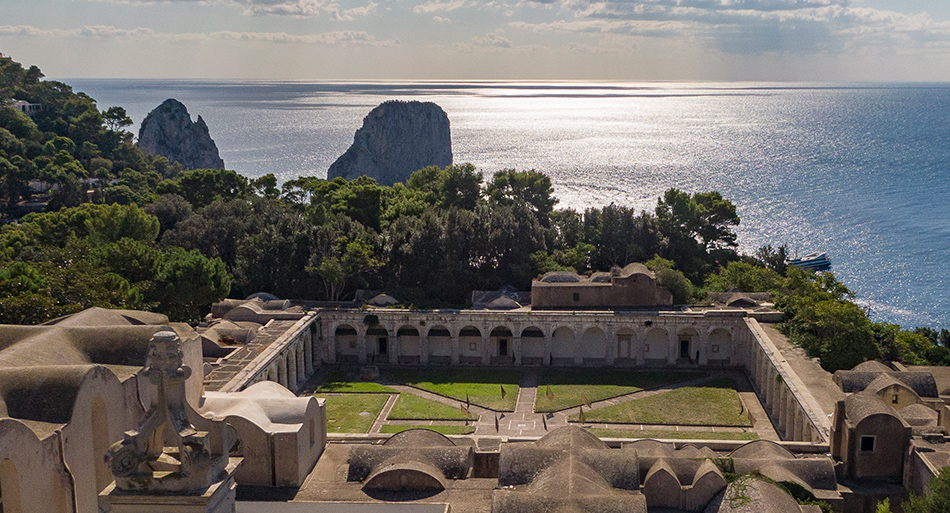
Interview by Fabio Pariante, X / Instagram / Website
